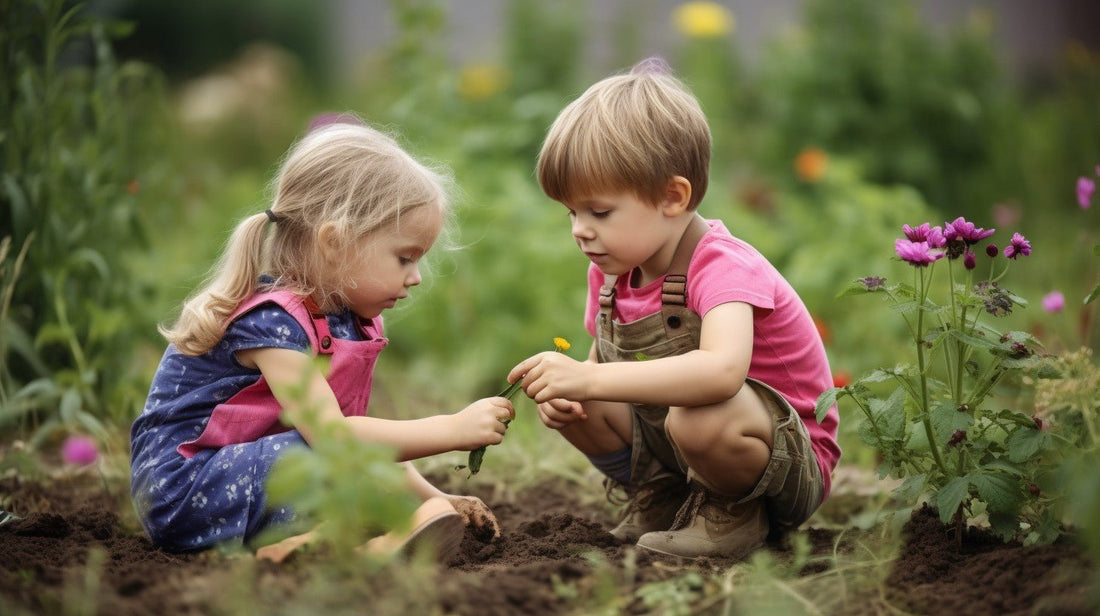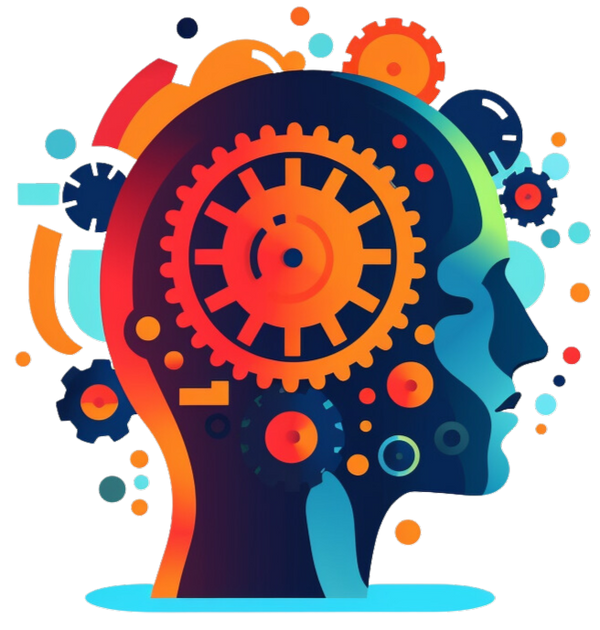
Empowering ADHD Children: The Magic of Multisensory Learning
Share
From the very beginning, we experience our world with (at least) five senses – such as touch, hearing, and sight. So why not when learning? A look at the world of multisensory learning – and how this approach can help children with ADHD with their schoolwork.
Have you ever had to laugh watching people from the South speak? Catchphrase: arms and hands flying . Well, you should probably do the same if you ever want to learn Italian—because it will help you learn it faster.
Learn a foreign language faster thanks to gestures?
A study by the Max Planck Institute for Human Cognitive and Brain Sciences examined the effectiveness of gestures in learning an artificial language called "Vimmi." The results showed that participants who learned words using their own gestures were better able to remember them. This was confirmed by brain scanning studies, in which the motor area of the brain was activated when participants heard the learned word. Study leader Katharina von Kriegstein emphasized that engaging multiple senses facilitates learning. This principle is already used in many language courses, combining vocabulary lists with pictures.

What is multisensory learning?
At its core, multisensory learning is about using two or more sensory modalities—such as sight, hearing, touch, taste, and smell—to convey information and improve understanding, retention, and later recall.
From moving our fingers through textures to tasting different foods and listening to different sounds, sensory experiences are not only memorable but also incredibly powerful for our learning. Many of us may remember our own school days when we participated in activities that stimulated our senses and made lessons more lively and easier to remember. So multisensory learning is neither a "trend" nor a strange idea—it's the kind of learning our brains and bodies were built for. And also the way babies, whose world was previously a water-filled bubble in the womb , quickly adapt to a life filled with all sorts of adventures and dangers.
And the connection to school? Imagine a classroom where students not only read about a specific concept, but also see pictures, hear sounds, touch objects, and even move in ways that reinforce the topic. This multifaceted approach ensures that learning isn't just a passive absorption of information, but an immersive experience. It's life, in other words.

Why is the inclusion of the 5 senses so important?
Everyone has a unique way of processing information . While some are visual learners, others are better able to grasp information through hearing or touching objects. By integrating different sensory inputs, multisensory learning ensures that teaching methods are accessible to a wider range of learners. This is especially beneficial for people with ADHD, as various conventional methods often fail to capture their attention.
An example:
Imagine you want to learn everything about the rainforest. You can read 10 pages about it and look at some pictures in an illustrated book. Or you can:
- See vivid images or videos of rainforests
- hear the sounds of rain, animals and rustling leaves
- Touch samples of plants or materials from the rainforest
- move like some of the animals native to the rainforest
- Move through the rainforest with the help of VR glasses and a “virtual machete”
It quickly becomes clear: By addressing several senses , the previously abstract concept becomes more vivid, more memorable and learning is much more fun for the child.

Why is multisensory therapy particularly effective for children with ADHD?
Attention-deficit/hyperactivity disorder (ADHD) is not just about hyperactivity or inattention; it is a complex neurodevelopmental disorder that affects how children process and respond to information.
ADHD and information processing:
Children with ADHD often have difficulty maintaining attention, especially when tasks are repetitive or lack stimulus. Simply put, their brains are "wired differently," making it much harder for them to filter out distractions and focus on a single task. This has nothing to do with willpower or motivation, but rather a fundamental difference in the way their brains process information.
The more senses, the more directed stimulation:
Multisensory learning is inherently stimulating. Instead of relying solely on a single sensory input, the brain is provided with information from multiple sources . For a child with ADHD, this is like turning on multiple lights in a room to help them see and understand more clearly. The different stimuli capture the child's attention (in the frontal lobe), allowing them to focus better and be less easily distracted.
The plastic brain and its neural networks:
The human brain is incredibly adaptable, a property known as neuroplasticity . This means that our brains can continually reorganize themselves throughout life, especially during childhood, forming new connections between neurons. Multisensory experiences, which engage different parts of the brain simultaneously, have been shown to promote the formation of these connections. In children with ADHD, this can lead to stronger neural pathways related to attention, memory, and understanding in the medium term.

Practical examples of multisensory learning
The beauty of multisensory learning lies in its adaptability. It can be incorporated into almost any subject, making lessons more engaging and memorable. Here are some practical examples for different subjects:
Reading: Use of structured letters and letter shapes to touch, reading aloud and visual aids.Example: Have your child trace letters with their finger while saying the sound aloud. This tactile experience, combined with the auditory process of pronouncing and hearing, strengthens letter recognition and phonetic understanding.
Math: Use physical objects— like circles and blocks —interactive apps, and rhyming songs.
Example: Teach fractions using real cake slices or specially designed sets that accurately represent the fractions. This multisensory approach makes abstract concepts like fractions literally tangible.
History/Geography: Interactive maps, documentaries and excursions.
For example, explore a historic site in person or through a virtual tour. Feeling the texture of ancient stones, hearing stories from the past, and being visually immersed in the environment bring history to life in a way that textbooks simply can't.
Incorporating multisensory techniques doesn't require a complete overhaul of current teaching methods. Often, it's simply a matter of adding additional sensory layers to existing instruction to ensure that learning is not just an intellectual exercise but a holistic experience.

Tips for multisensory learning at home
Introducing multisensory learning at home can fundamentally change your child's educational journey. However, getting started with this approach can feel overwhelming at first. Here are some practical tips to make the transition smoother and more effective:
Start small:
Tip: Don't feel like you have to revolutionize your homework help overnight. Start by introducing just one multisensory activity. Once you and your child get used to it, you can gradually add more techniques.
Example: When teaching your child addition, use something like toys or food. How many small cars fit side by side in the garage? And what does it look like outside in the parking lot? How many bars would you have to eat to feel full? Etc.
Use what you have:
Tip: Multisensory learning doesn't require expensive tools or resources. Take a look around your home; you'll be surprised at how many objects can be repurposed for learning purposes.
For example, a bowl of rice and alphabet soup can become a tactile letter-search platform. Pots and pans can be used to learn sounds and rhythms.
Observe your child:
Tip: Every child is unique. Pay attention to which senses your child prefers. This will give you insight into which multisensory techniques are most effective.
For example, if your child enjoys movement, consider incorporating more kinesthetic activities like dancing or role-playing. If your child is drawn to sounds, consider incorporating music or sound effects into your lessons.
ADHD children are often visually inclined, so you may find success with pictures and colors.
Stay patient and flexible:
Tip: Not every activity will be a hit, and that's okay. The goal is to find out what resonates with your child. If something doesn't work, take it as a learning opportunity and adjust your approach.
For example, if a tactile math game with beans isn't engaging your child, try changing it. Perhaps using building blocks or drawing in the sand is more appealing.
Remember that multisensory learning is all about exploration and discovery. It's a collaborative process where you and your child learn and grow together.

Benefits beyond the academic field
Although the primary goal of multisensory learning is to improve academic understanding, especially in children with ADHD, the benefits extend far beyond the classroom. By engaging multiple senses, this approach also promotes children's holistic development in a world that is becoming increasingly faster, more unpredictable, and more ambiguous due to rapid technological change.
Here are some other benefits of multisensory learning for children with ADHD:
Motor skills: Activities that involve movement, touch, and coordination play a crucial role in improving motor skills. These activities can be especially beneficial for children with ADHD, who sometimes have difficulty with fine and gross motor tasks .
For example, craft projects that require cutting, gluing, and assembling can improve fine motor skills. On the other hand, activities like dancing, jumping, or balancing can improve gross motor skills and help children with ADHD better control their movements.
Social skills: Group activities that involve multisensory learning can provide a platform for children with ADHD to interact, communicate, and collaborate with peers on an equal level. These interactions can help develop important social skills such as taking turns, listening, and expressing oneself.
For example, a group project where children create a mural might involve discussions about color selection, taking turns while painting, and collaborating on the overall design. Such activities teach not only art, but also the intricacies of teamwork and communication. The same is true, by the way, for many (board) games .
Self-esteem: Learning success can significantly boost self-confidence. When children with ADHD participate in multisensory activities tailored to their learning style, they are more likely to experience success, which in turn can boost their (often fragile) self-esteem .
For example, a child with ADHD who struggles with traditional reading might succeed with structured letters or an interactive app. These experiences of success can give the child a sense of accomplishment—and visibly strengthen their desire to continue learning.

Summary
Multisensory learning offers a wealth of experiences that address the diverse needs of children with ADHD. It does this by utilizing all five senses, which we humans have used since the beginning of our species to explore and shape life. Beyond academic achievement, multisensory learning also paves the way for personal growth. It can help children with ADHD navigate the world with enhanced skills, greater confidence, and resilience. Parents and educators can use this holistic approach to provide children with ADHD with a solid foundation for future educational success and career success.
